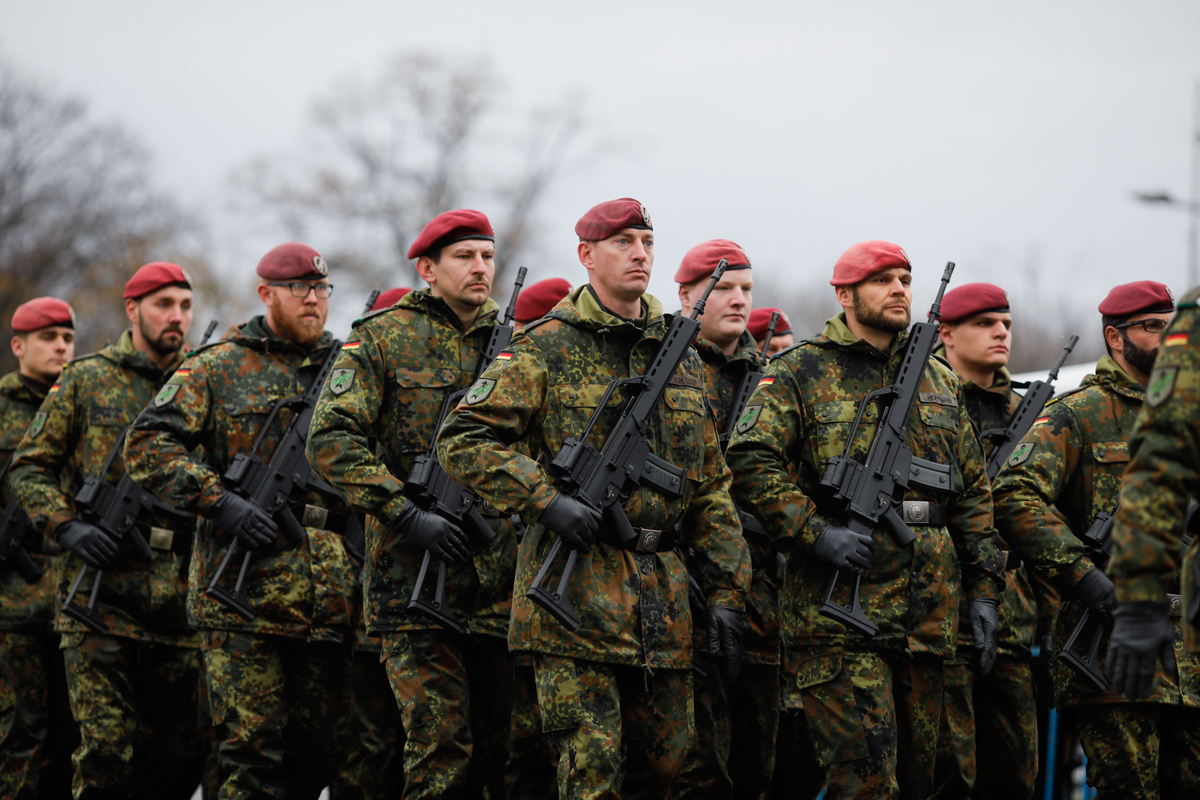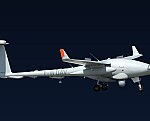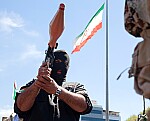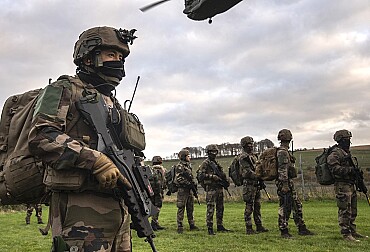Types of military service across NATO member states
Military service is a fundamental element of every state's defense policy. However, the way it is organized and its legal framework vary significantly across NATO member states. This diversity stems not only from different historical experiences, demographic conditions, and constitutional traditions, but also from the specific security situation in which each country finds itself. The common denominator, however, remains the effort to ensure sufficiently numerous and well-trained armed forces capable of responding to conventional and hybrid threats.

The Alliance as a whole does not require its members to adopt a uniform model of defense policy, which gives states considerable autonomy. This approach allows them to tailor the structure of their armed forces to their own needs, but at the same time complicates cooperation within the Alliance structures. Although NATO shares joint defense planning, the issue of human resources remains the responsibility of individual states. The result is a wide range of approaches, from fully professional armies to compulsory military service and total defense systems.
Models of military service
1. Fully professional army
The model of a professional army based on voluntary recruitment is used by most Western NATO countries. Members of the armed forces are contract employees of the state who volunteer for military service and undergo a rigorous selection process. This is characteristic of the United States, the United Kingdom, Germany, and the Czech Republic. Professional armies rely on a high degree of specialization, technological equipment, and high-quality training. The advantages of this model include efficiency, high morale, and motivation among soldiers, which is often linked to the prestige of service and career opportunities. The disadvantages include high financial costs and a relatively low capacity to rapidly expand forces in the event of a crisis. Another problem is the declining interest in military service, especially in times of peace and in countries with negative population trends. The professional model emphasizes stability and long-term preparedness. In crisis situations, however, it depends on sufficiently functioning reserve systems, which tend to be less developed in countries with this model than in countries with conscription.
2. Universal conscription
Some NATO countries still have universal conscription, which requires all (or most) citizens of a certain age, usually men, to serve in the military. Typical examples are countries such as Greece, Turkey, Lithuania, and Estonia. Citizens are required by law to undergo military training and, upon completion, are assigned to active or passive reserves. This model ensures a relatively high level of personnel readiness and rapid mobilization. It also allows for broader involvement of society in defense and often strengthens national identity. In some countries, gender equality is also applied—for example, Norway has been conscripting women and men equally into military service since 2015. A disadvantage may be a lower level of motivation and professionalism, as service is not performed on a voluntary basis. Its effectiveness is also criticized in the era of technologically advanced battlefields, which place high demands on expertise and specialization.
3. Selective conscription systems (hybrid models)
Between classic professional armies and universal conscription, there are models that combine elements of both approaches. Examples include Sweden and Denmark. These countries formally maintain a system of compulsory military service, but apply selective conscription—only a limited number of people are called up for training each year based on ability, motivation, or a selection process. The advantage is flexibility – the state maintains its ability to mobilize without burdening an entire age group of potential conscripts. The selective conscription model allows training to be targeted at higher-quality candidates and facilitates adaptation to a changing security environment. It also creates conditions for the development of active reserves without completely abandoning the principle of conscription. The hybrid approach is often seen as a compromise between full professionalization and universal conscription. It can be a sustainable defense model, especially in smaller countries with limited human and financial resources.
4. Total defense model
A specific approach to military service is represented by the so-called total defense model, most prominently represented in Finland. The concept is based on the assumption that in the event of a crisis, the entire society will be involved in the defense of the state – not only the armed forces, but also civilian structures, industry, local government, and citizens. Military service is compulsory for men, while women can volunteer. The Finnish model is known for the high level of trust the population has in its own army and the widespread involvement of the population in the reserve system. Emphasis is placed not only on training and preparedness, but also on the resilience of society as a whole. The system includes, for example, extensive warehouses, shelters, regular civil defense exercises, and links between the army and local communities. This strategy ensures a high degree of autonomy for the defense system and the ability to resist for long periods even if allied assistance is interrupted. Total defense is demanding in terms of organization and financing, but it represents a robust and society-wide approach to security. Currently, several NATO member states, including the Baltic countries and Poland, are inspired by the Finnish model.
Trends and developments
Following Russia's invasion of Ukraine in 2022, there has been a clear shift in NATO's approach to conscription. While previous decades saw the gradual professionalization of armies, recent years have seen growing interest in models that allow for the rapid mobilization of the population. Germany, which abolished compulsory military service in 2011, is currently discussing its possible reinstatement. Another notable trend is the growing emphasis on active reserves. Many member states are investing in the development of reserve forces and looking for ways to motivate citizens to volunteer for service in uniform outside their main career path. This approach is proving flexible and relatively cost-effective. At the same time, it helps strengthen the relationship between the armed forces and civil society. The involvement of women in military service remains an equally important issue. While most countries allow women to join the armed forces on a voluntary basis, only Norway has truly gender-neutral conscription. In the future, the issue of equal access to service is likely to remain a subject of debate, particularly in the context of broader societal changes in the perception of national defense as a collective task.
The diversity of military services across NATO member states reflects different historical experiences, geographical conditions, and political traditions. Although there is no single model, all countries face similar challenges—demographic decline, personnel shortages, and the need to prepare for high-intensity crisis scenarios. A key trend in recent years has been a return to elements of conscription and an emphasis on mobilization capabilities. From the perspective of Alliance defense, it is important that different approaches are compatible and allow for effective cooperation in joint operations. This requires not only technical interoperability, but also the sharing of best practices in the field of human resources. NATO as an institution can play an important role as a mediator and coordinator in this regard. The future of military service in NATO is likely to be hybrid, combining elements of professional forces, voluntary reserves, and partial conscription. The Nordic model, which emphasizes society-wide preparedness and engagement in defense, could serve as a model. The challenges of the 21st century require new approaches – not only in terms of weapons, but also in terms of the approach to those who carry them.










